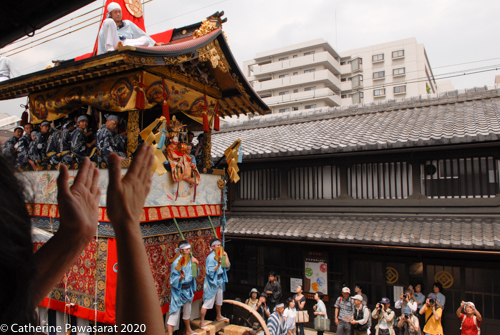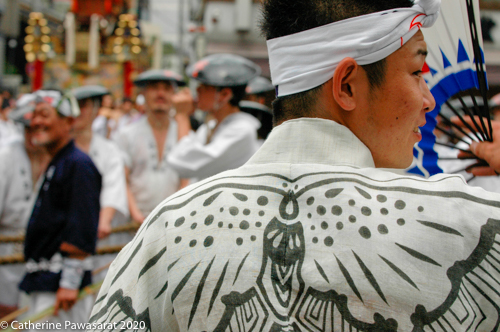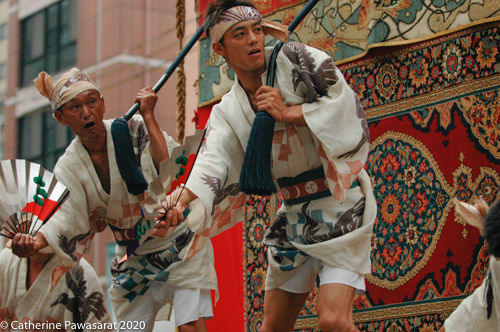Self-Introduction for Writers in Kyoto
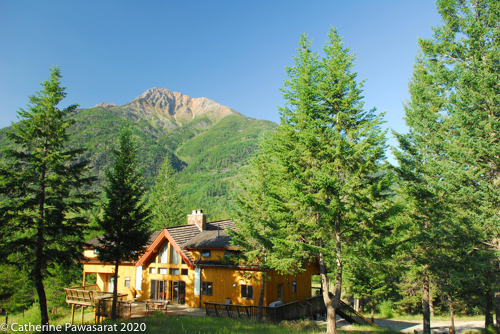
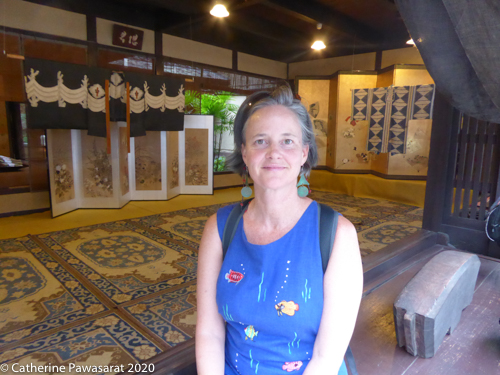
It’s a pleasure to join Writers in Kyoto. I appreciate the warm welcomes and it’s heartwarming to see some old familiar names and faces.
I grew up in Kansas City, U.S., and always dreamed of traveling abroad. I started studying foreign languages as a way to help me do this. A friend at Columbia U talked me into studying Japanese with him, even though I had virtually no interest in it. He dropped out and mysteriously I stuck, even though I found it impenetrable. I was impressed by how committed my Japanese professor was to our success: he held extra study groups every week, the only prof I had who did this.
My major was Spanish and English Comp Lit, and on graduation I dreamed of traveling around Latin America. But I was broke and a young woman and had no idea where to go or what to do, none of which boded well. My Japanese prof suggested I go to Japan, teach English for a year, and then travel around Asia. It seemed like a good idea. I went to the library and there were two photo books on Japan: one of Kyoto and one of Tokyo. The photos of Kyoto looked like paradise, so I decided to go there. I jumped on a plane in 1989.

For my first year in Japan I felt I’d been duped. Kyoto looked nothing like the photos I saw in the book. I was too busy teaching English in Osaka, paying off exorbitant deposits on apartments and phone lines in bubble-era Japan, to visit Kyoto temples and gardens.
As a lit major, I longed to write. I got a job copywriting at an ad agency in Osaka. Futurist Alex Steffen persuaded me to take his job as a freelance regional correspondent at The Japan Times. I loved getting paid to write about things that interested me, and there was always so much of interest in Kyoto.
I also wanted to get serious about Japanese so decided to go to Japanese school full time. I didn’t think I could support myself as a part-time journalist. Through serendipity (and not surprisingly former Kyoto Journal editor David Kubiak) I was offered a free place to live. It turned out to be a empty, sprawling historic traditional home with an enormous garden, in downtown Kyoto. It looked like the photos in that book! Four of us young gaijin lived there, and since we had no money we also had no furniture, so we were unintentionally very Zen. I learned the hard way to live with the seasons, and why the Japanese bath is heaven on earth.
Most relevant here, one day I ran out my front door and bumped into a gigantic wheel as tall as I was, lashed to timbers with rope. A bunch of Japanese guys paused for about two seconds to blink at me, then carried on with their rope and timber lashing. I had to get to Japanese school. By the time I came back Kita Kannon Yama was adorned in all its glory. I had no idea what it was, so started with the basics. I walked around asking Japanese men, “What is this?” and watched them try to come up with a response.
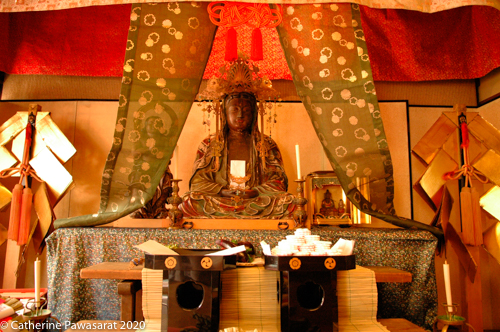
I wrote two articles on the Gion Festival that first summer, one on the controversy around women’s participation and the other on its internationally valuable textile collection. My Japanese was decent but I still walked around with my Japanese-English dictionary in hand, leafing through it after speaking to people, and as I tried to read the Japanese-only signs. There are lots of words in the festival that aren’t in even the best dictionaries, so I quickly learned to spend time listening to people who knew things. They turned out to be relatively small in number. Getting to know them and participating in the ancient oral tradition of the Gion Festival has proven to be one of the great joys of my life.
After a nine-month stint studying plant medicine in the Brazilian Amazon in the late 1990s, I realized I needed to learn to meditate. Ironically my karma led me to Doug Duncan, a Canadian-born meditation teacher who’d been invited to teach in Kyoto. After meditating for 10,000 hours, all those Kyoto temples took on a very different meaning.
There are temples everywhere in Kyoto of course, but around the year 2000, because of the Om Shinryikyo scandal no one wanted to let foreign strangers do retreats there. So as a group, with my meditation teacher and now partner, we founded the Clear Sky Retreat Center in Canada, in the wilds of the BC Rockies. Leaving Kyoto broke my heart but I’ve found much freedom that I hadn’t realized I didn’t have. Last year, based on years of teaching and training together, Doug and I self-published Wasteland to Pureland, a manifesto for transforming suffering into spiritual liberation.
It’s been a wonderful challenge to reconcile spending time in B.C.’s wild nature with spending time with the Shinto kami of the Gion Festival. Working to develop a sustainable organization in Canada has given me much food for thought about the sustainability of the Gion Festival, and the role tourism can play in that. Mostly, though, my meditation practice and experiences in the Amazon helped me to connect with the Gion Festival’s very profound spiritual dimensions. They are available to those who are seeking.

After years of enjoying the Gion Festival I realized that it wouldn’t be right to keep it all to myself. Some years back I created Gion Festival.org as a guide to the Gion Festival labyrinth, and I’ll be self-publishing the first English-language guide to the Gion Festival in summer 2020. Since the Gion Festival is dedicated to deities that bring or guard against epidemics, working on the book during this Covid-19 outbreak has given me much to ponder.
Heartfelt thanks to WiK members for your support in this undertaking from across the ocean. Hope to see you in Kyoto.
